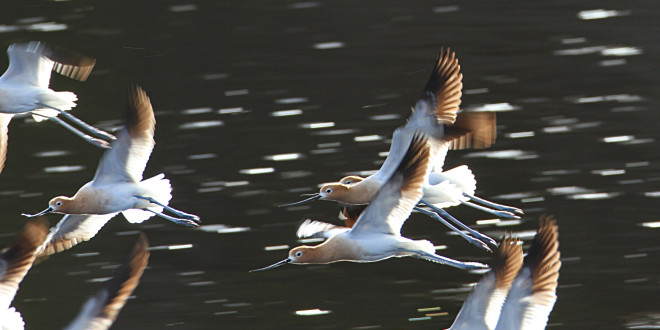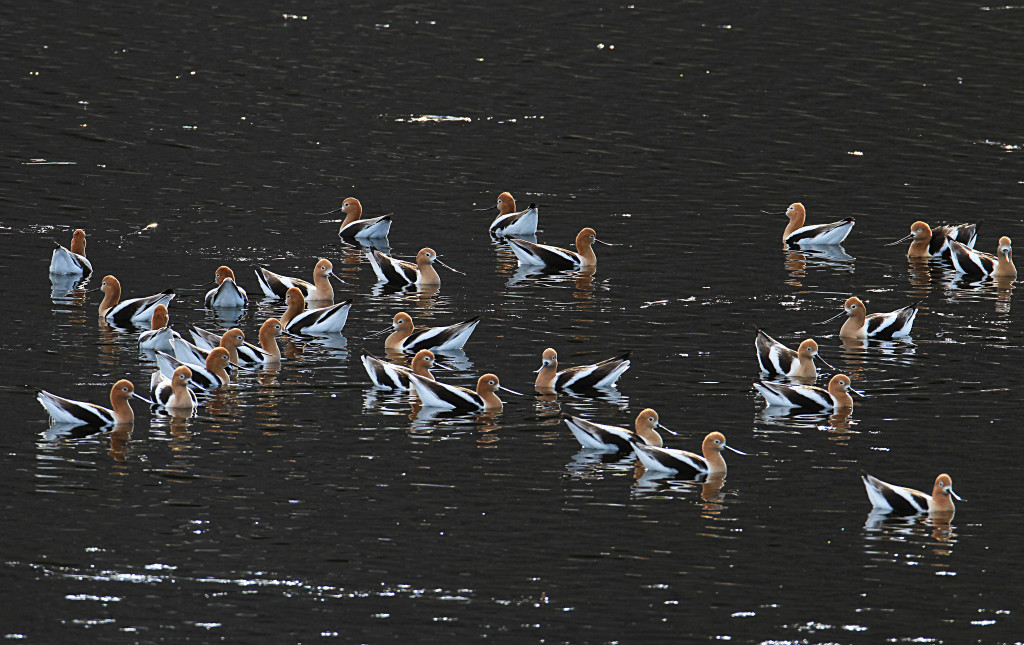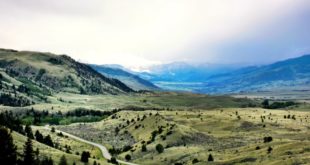Have you ever seen a flock of American avocets alight in Yellowstone National Park?
Rather elegant and beautiful long-legged shorebirds, American avocets are prevalent throughout the American West, inhabiting shallow marshes and both fresh and saltwater marshlands. In Yellowstone, these birds tend to be seen in the summer (during breeding season) and during migration, when they move south to the Gulf Bay of Texas, Baja California, and further down into Mexico for the winter.
There is something idyllic about the lives of American avocets: gently traipsing shorelines or floating on lakes or between marshy plants. In Yellowstone summertime especially, they seem like dolled up travelers enjoying a splendid season in America’s first national park.
Although American avocets are a species of Least Concern, since they depend on wetlands year-round, their life history is tied together with the extant and health of wetlands, which are themselves perennially in danger of degradation due to climate change and/or human destruction.
Basic Facts
- Scientific name: Recurvirostra americana.
- American avocets are not sexually dimorphic i.e. there are no grand differences between males and females.
- Measure 17 to 18.5 inches in height.
- Wingspan measures 28.3 inches.
- Weigh between 9.7 and 12.3 ounces.
- Plumage changes based on season.
Habitat
- Prefer marshlands and bays, but standing water and a healthy supply of food is their only requirement within reason.
Diet
- Dine on aquatic invertebrates, insects, and crabs.
- American avocets feed while wading or swimming, using their long bills to sweep up prey.
Migration
- American avocets are on the move between March to May as well as July to October.
- As mentioned, they winter as far south as Mexico and even Guatemala.
Nesting
- American avocets build nests by scraping a hole in the ground.
- Then, the nest is usually lined with vegetation, feathers, pebbles, and grass.
- Sometimes, avocet nests are unlined.
- American avocets nest in colonies most of the time.
- Are extremely territorial during nesting season.
- If there is a perceived threat, avocets will enact a distraction by running around crouched on their stilts.
- If that maneuver fails to dissuade a predator, they will outright attack, calling loudly.
Courtship
- American avocet males will preen themselves with water, building to a frenzy before, in a fit of frenetic splashing, they mount.
- After this display, American avocets will link their necks and march around for a bit.
Reproduction
- American avocets lay three to four eggs per pairing.
- Eggs are olive-brown with dark spots, pointed on one end.
- Incubation lasts 23-25 days.
- Females incubate at night while both sexes take turns during the day.
- When American avocets hatch, they are well-developed, having downy feathers and the ability to walk.
- Interestingly, American avocets do not feed their young, though they tend to them.
- American avocets start flying after four to five weeks.
Nice Plumage
- Besides their elegant legs, American avocets are known for their beautiful plumage.
- Avocets are mostly white, with bands of black feathers on their wings.
- Their body and wing colors stay constant throughout the year.
- In summertime, avocet heads and necks are a lovely buff or rust color.
- In wintertime, their heads and necks turn white.
- American avocets are protected under the Migratory Bird Treaty Act of 1918.
 Yellowstone Insider Your Complete Guide to America's First National Park
Yellowstone Insider Your Complete Guide to America's First National Park







You must be logged in to post a comment.